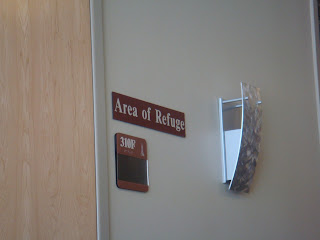 When I visited the AMNH this past December, I was particularly taken with the Triceratops on display. Having recently painted a skeleton in detail, each bone seemed extremely familiar and identifiable. In “person,” the Triceratops skeleton was a beautiful testament to the power and presence of the animal. I found myself with a new appreciation for Ceratopsids.
When I visited the AMNH this past December, I was particularly taken with the Triceratops on display. Having recently painted a skeleton in detail, each bone seemed extremely familiar and identifiable. In “person,” the Triceratops skeleton was a beautiful testament to the power and presence of the animal. I found myself with a new appreciation for Ceratopsids.I don’t know much about Ceratopsids. It seems they’re lost in a sea of Theropods…overshadowed by the gigantic Sauropods. In movies, T-rex, Velociraptor and other carnivorous dinosaurs are given the spotlight. Jurassic Park featured a Triceratops, but it was sick, on its side and hardly depicted as exciting.
Most of what I do know about Ceratopsids comes from my visit to AMNH. In fact, during that visit, Brian taught me one of the most basic of facts: the difference between Chasmosaurines and Centrosaurines.
Chasmosaurinae includes Anchiceratops, Arrhinoceratops, Chasmosaurus, Eotriceratops Pentaceratops, Torosaurus and Triceratops. Chasmosaurines are characterized by huge triangular frills with large fenestrae to minimize the weight, large eye horns, long skulls and short-to-absent nasal horns.



Pentaceratops (top) and Chasmosaurus (middle) images from weatherenthusiast.com and skulls-skeletons.com, respectively. Triceratops (bottom) image from mnh.si.edu.
Centrosaurinae includes Achelosaurus, Avaceratops, Brachyceratops, Centrosaurus,, Einiosaurus, Pachyrhinosaurus and Styracosaurus. Centrosaurines are characterized by highly ornamented, small frills, short skulls, absent eye horns and large nose horns.



Centrosaurus (top) and Pachyrhinosaurus (middle) images from uoregon.edu and tyrrellmuseum.com, respectively. Styracosaurus (bottom)image from biology-blog.com.
You can see, particularly well, the general differences in the skulls by comparing the Triceratops and Centrosaurus images.
Also, you'll notice, in the photo of Chasmosaurus, a round opening in the skull slightly above and between the orbital sockets. From what I know, this opening is called the pineal foramen, frontoparietal foramen or postfrontal foramen, though I believe the latter is an out-of-date term. I haven't been able to find much information on this particular part of the skull, nor do I know if it is specific to certain families of Ceratopsians, though I do remember Brian telling me something about it at AMNH.
Anyone know more about this?
References:
Zach Miller, When Pigs Fly, Evolution of Ceratopsia Part 2.
Wikipedia. Ceratopsidae.
Dodson, P., Forster, C., and Sampson, S. 2004. Ceratopsidae, p. 494-513. In Weishampel, D., Dodson, P., and Osmólska, H. (eds.), The Dinosauria (second edition), University of California Press, Los Angeles.




























